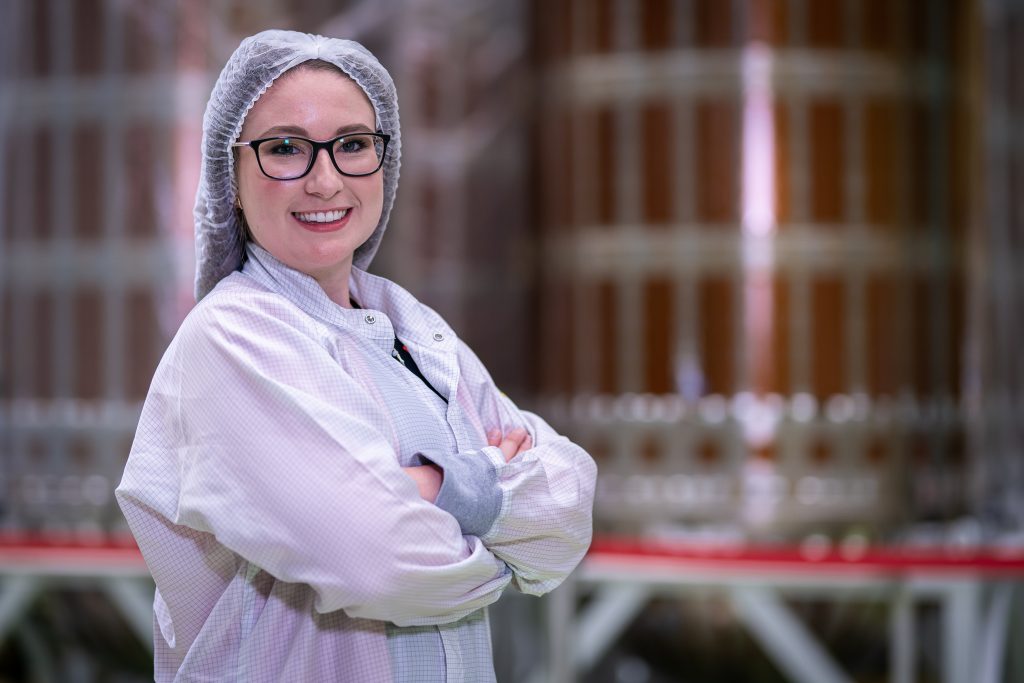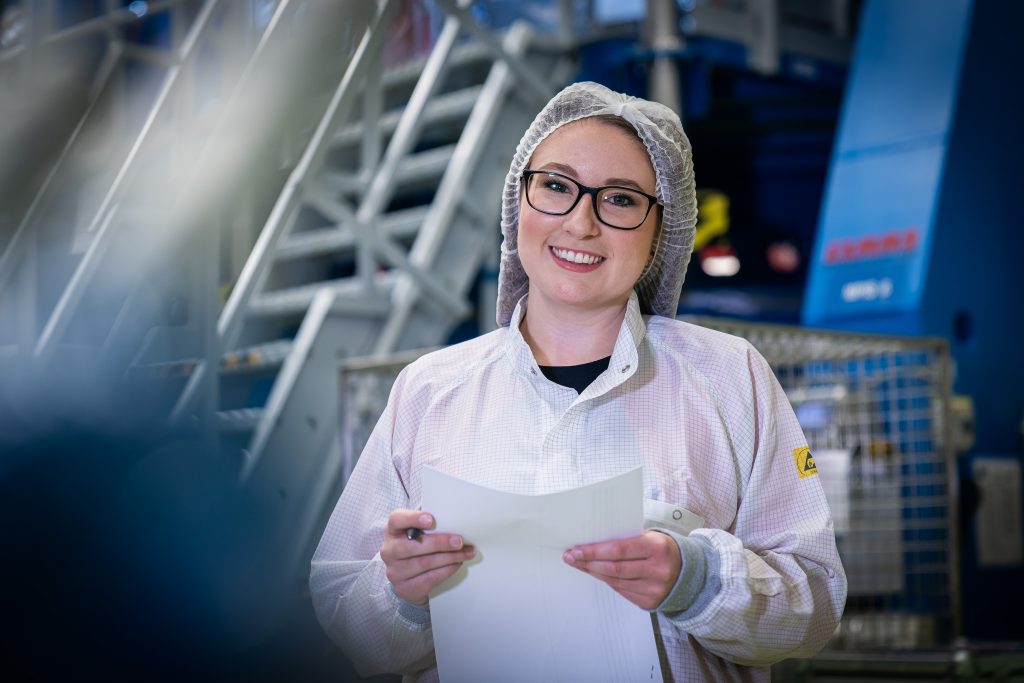It takes thousands of people to build a lunar spacecraft, let’s meet them and see what they do. Today: Siân from Airbus.

What is your name and your role on the ESM team?
Siân Cleaver. Orion ESM Industrial Manager and ESM-2 AIT Scheduler
How long have you been involved in ESM’s development and what are your tasks?
I’ve been part of the team for 3 years now. Originally, I started off in a project management support role, but now I’m both the Industrial Manager for Orion as well as the Assembly Integration and Test (AIT) scheduler for ESM-2. In my role as Industrial Manager, I’m responsible for making sure that we deliver our spacecraft on time to the customer, ESA. I track all the different pieces of equipment that we need to build each ESM and try to make sure that everything arrives on time so that it can be integrated onto the spacecraft as planned. If something is late for whatever reason, then the team and I work to mitigate this or adapt our integration flow to accommodate. Everything is done keeping the delivery date of the spacecraft in mind. In my role as ESM-2 AIT scheduler, I keep the production schedule up to date on a daily basis, and also optimise, improve and adapt the AIT workflow when needed.
What is your educational background/prior work experience? How did you come to work on ESM?
I have a master’s degree in Physics and Astronomy from Durham University in the UK. I started working at Airbus as a Systems Engineer immediately after graduation – I was on the UK Graduate Scheme. I worked on the early phase development of various ESA science and exploration missions as an engineer, project manager, industrial manager and also as part of bid teams to win future contracts. Even though the projects I worked on were pretty exciting, I had always wanted to work on the ESM project because human spaceflight is my true passion. When an opportunity came up to support the team, I jumped at the chance and relocated to Germany.
What is the most notable or memorable moment during your time working on ESM?
The most memorable moment for me has to be the day that we shipped ESM-1 to the US. A huge Antonov aircraft landed at the (relatively small!) Bremen airport which was spectacular in itself. The day of shipping happened to coincide with the day I was flying back to the UK from the same airport. My flight was the last flight to take off before ESM-1 was loaded into the Antonov, so as I was boarding the plane I got a really good view of the Antonov with the doors open, ready for loading. That was pretty cool.

What does it mean to you to be part of the larger team helping to get humans back on the Moon?
It’s really special to be part of a team that is essentially ‘making history’ again. We’re helping to return people to the Moon, as well as put the first woman on the Moon. And not many people can say that. It’s a little frustrating when outsiders don’t fully understand the true impact of what we’re doing here, or just how amazing the whole project is. But I look forward to the day when we finally get to the Moon and I can say that I was part of that.
What is one thing you’d like the European public to know about your job?
I would like them to know that we do some really cool space stuff here in Europe! We are actually building something that is critical for taking people back to the Moon. We’ve long moved on from the Space Race between the US and Russia – the space industry is much more international now, and Europe plays a big part.
Do you have any advice for future generations interested in space exploration?
If you’re from the UK, as I am, then don’t underestimate the importance of learning languages. The space industry is so international, so having an additional language under your belt will open up so many more opportunities for you. Also, definitely stick with those childhood ambitions of wanting to be an astronaut. You might not actually fly in space, but having a strong ambition like this will likely lead you onto an interesting and exciting career path.

 Automated Transfer Vehicle page
Automated Transfer Vehicle page ATV blog archive
ATV blog archive
Discussion: no comments